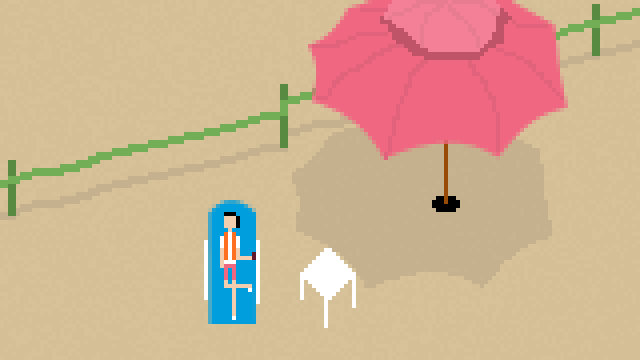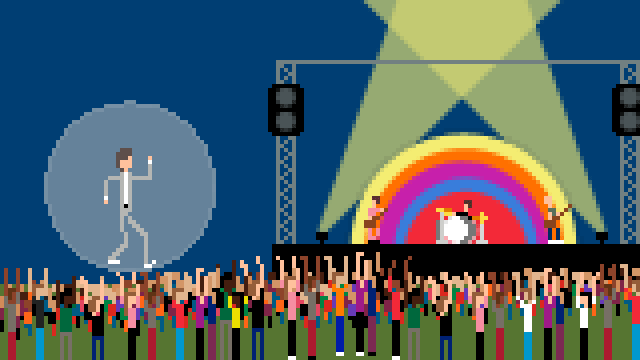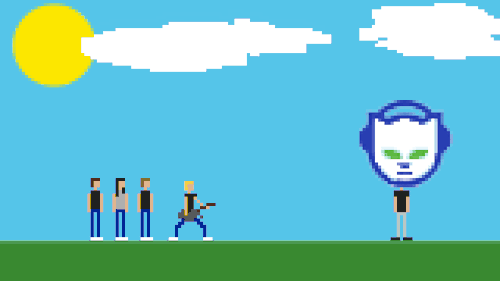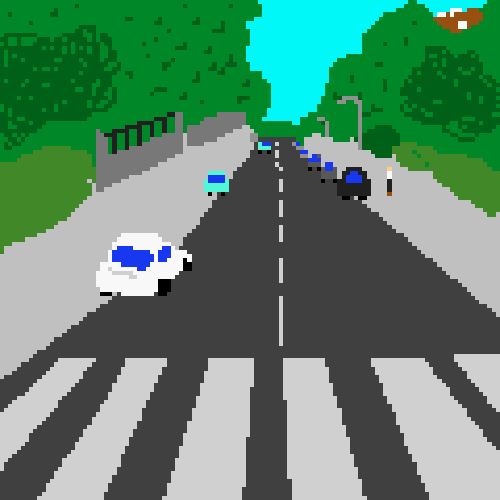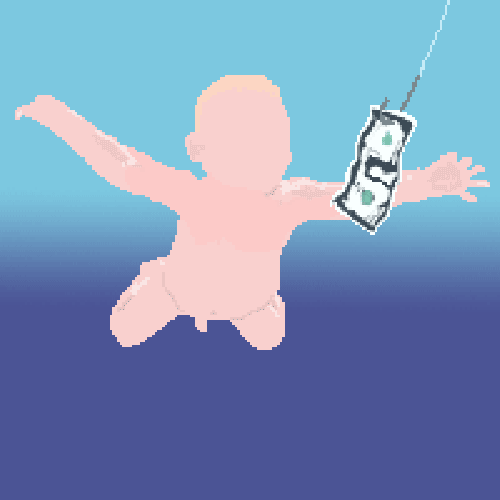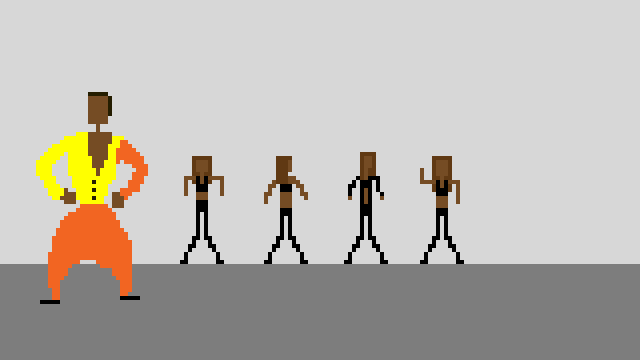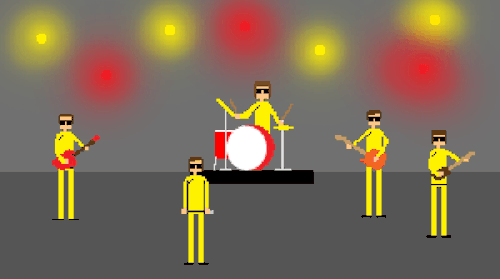
In this recurring column, Leigh Alexander visits exciting new creative frontiers in the video game space, which is seeing a period of incredible growth and diversification, attracting new talent and demonstrating intriguing innovation. Here she’ll cover emerging artists, trends, and so much more.
2012 was a fascinating year for gaming—the commercial market may have narrowed, but as the mobile and social spaces flourished, indie matured to offer a wealth of polished downloadables. Grassroots culture flourished, and the industry seems broader and more creatively rich for everyone.
For anyone interested in playing or making games, there are more opportunities than ever. Here are five creative trends that defined the year in gaming.
Playing Together in Person

Still from Dance Central 2.
Cooperative two-player modes are as old as the arcades, and online play—whether in console-based matches or in massively multiplayer universes—was one of the great forces to emerge from the last 10 years. But this year we see gaming come back to the living room in an entirely new way: Nintendo’s new Wii U is aimed in part to serve the family that’s gotten used to gathering around many different devices, with a controller that looks like a tablet and can offer shareable windows into the gameplay experience.
In recent years, musical instrument games and motion-controlled party games were all the rage, but the music game space has greatly evolved, and now game designers are looking at ways to make new kinds of games that are fun for couples and groups to enjoy. This season we covered the rise of game design geared at party and event spaces; the Sportsfriends collection we covered here has recently gotten funding on Kickstarter for its direct release to PlayStation 3.
Indie Joins the Big Fish

Screenshot from Journey.
No longer an optional part of the fringe, indie gaming is becoming a significant cultural powerhouse even among traditional game consumers. This is thanks in part to the rise of download platforms on PC and console. In the console space in particular, indie’s been important to the hardware makers’ differentiation strategy, since commercial retail titles are now so expensive to make that very few of them are exclusive to one or the other.
Spike TV’s annual video game awards have historically been a dubiously-advised celebration of mass consumerism in games, juxtaposed with Hollywood pageantry that doesn’t quite suit many fans. But this year, accepting the award for Best Indie Game, the creators of PlayStation Network title Journey shared a stage with Samuel L. Jackson at the televised event, while the episodic Walking Dead game, made by relatively-small and scrappy Telltale, took game of the year. It’s a sign of major cultural change: with increasingly equal polish and recognition—and in some cases, heaps more fan goodwill—it’s harder to shunt small creative visions into separate arenas from the traditional blockbusters.
Explosive Grassroots Culture

Screenshot from Gamemaker Studio
Now that small teams and indie successes have been widely embraced by traditional fans, there’s more fertile cultural ground than ever for individual creators to experiment with increasingly low-cost and accessible game-making tools. Virtually anyone who likes games can try making one, seeding a growing community of people who view game making not as a commercial aim, but as a hobby or an outlet of self-expression, the way one might try learning an instrument for fun. This paves the way for an incredibly diverse base of voices making small games on personal experiences, identity and more—especially those that might have gone previously-unheard in the gaming community. It’s an incredibly inspiring testament to the fact that games can be so many things for so many people.
Retro Explosion

Image from a test video for Double Fine Adventure exploring visual styles and techniques.
For many longtime gamers, there’s been a sense of loss as we move into the area of increasingly-realistic and visceral game worlds with expansive narratives and pipelines full of sequels. The types of games they once loved haven’t been commercially-viable for years, as game developers are forced to focus on making games that appeal to the widest audience base possible in order to justify the high development cost.
Crowdfunding has broken through that old standoff, letting players argue with their wallets against the old adage that there’s no market for old-school roleplaying games or point-and-click adventures anymore. Some of the biggest gaming successes this year on the crowdfunding platform came from developers who finally have the leisure to return to their roots thanks to passionate players who want to buy the kinds of games they miss from a bygone age.
It’s drummed up something of a fervor around retro styles, and certainly calls into question the idea that crowdfunding is ideal because it allows for the kinds of innovations that the high-risk retail market doesn’t usually. Who knows how long this trend will last—but for the time being, it’s clear that what’s old is new again.
The New Face of Text Gaming

Screen shot from Katawa Shoujo.
Where once we played text-only games because there were no graphics yet, a once-niche has new opportunities for relevance in the age of tablet devices and e-readers, where many consumers are engaged in reading and interacting with text on the go and in idle moments already. This potential’s supported by the hunger for a focus on more meaningful storytelling and unique themes in games—a writer’s possibilities are limitless, and in the text format their work isn’t going to be constrained by a huge team’s product vision, the way it often is in the commercial space.
Innovations on Al, relationship, and conversation games are sure to come from those already seasoned at designing games you read, and book publishers are hungrily looking to the text gaming space for ways to keep the content they publish fresh, interactive, and engaging in the digital age when fewer people are buying digital books. Gaming is merging with culture and the entertainment experience everywhere.
Previously: Indie As In “Individual” Gaming
















































